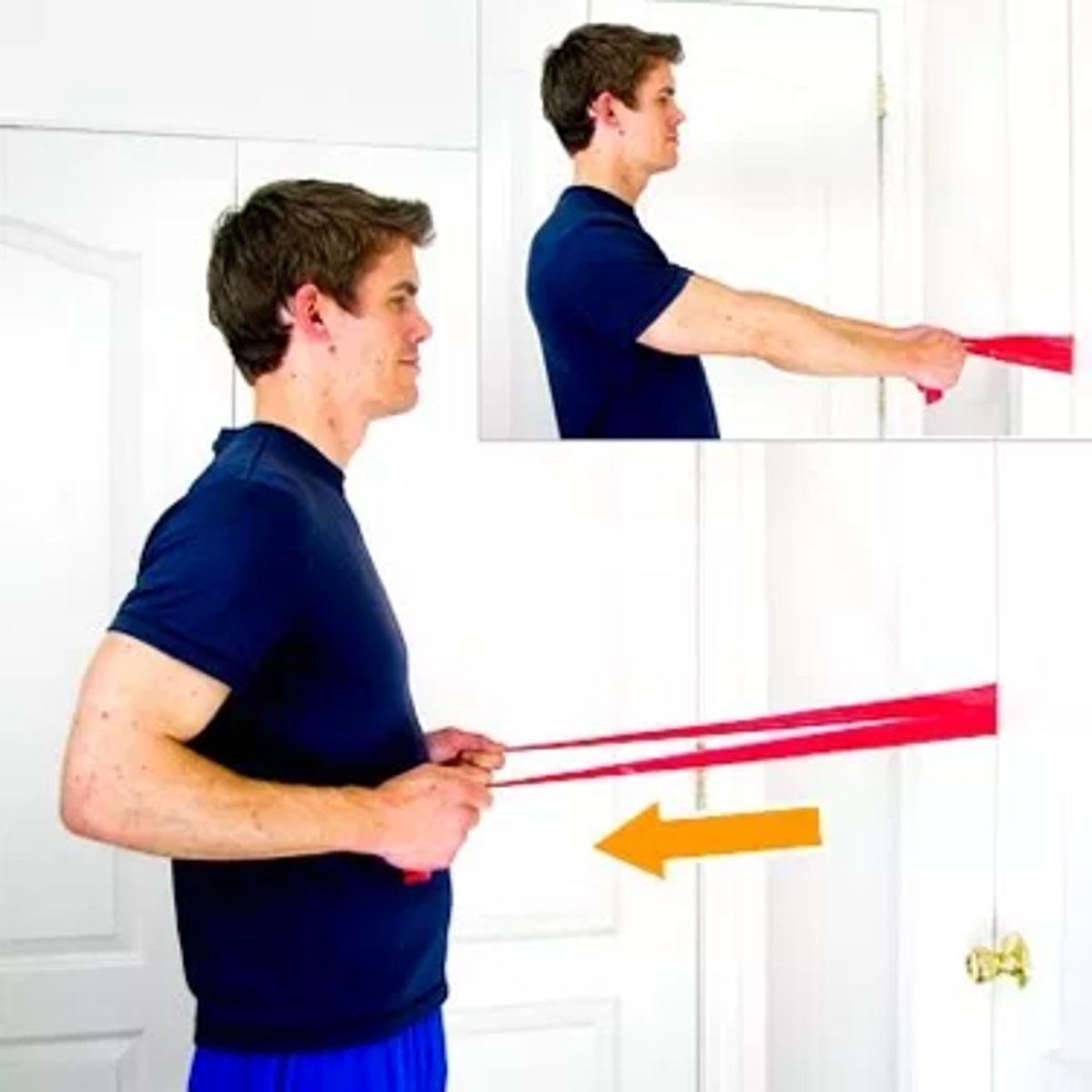Exam 1: Biomechanical and Rehabilitative Approaches in OT and OT Process
1/18
There's no tags or description
Looks like no tags are added yet.
Name | Mastery | Learn | Test | Matching | Spaced |
|---|
No study sessions yet.
19 Terms
T or F. Occupational engagement requires motor function
true
examples
-taking notes in class requires FM, GM, sitting, posture, endurance
-getting ready in the mornings
Biomechanical and rehabilitative approaches are commonly used for patients with motor deficits. What are some examples of conditions commonly treated with these FORs?
arthritis
THR
SCI
Carpal Tunnel Syndrome
Amputations
T or F. You can combine FOR/approaches when working with a patient.
true
example
-using theraband to work on regaining strength (biomechanics) but also using an adaptive tool in meantime to help open jars (rehab)
Biomechanical approach
-also called the remediation approach
-OTPF language = establish, restore
-focused on client factor/impairment level
-used when improvement in motor performance will occur
-goal = determine and "fix" cause of dysfunction in the mechanical system
-focuses on the range of motion, strength, and endurance required to perform an occupation
-most commonly used to treat patients with lower motor neuron deficits and orthopedic problems
What are the assumptions of the biomechanical approach?
-underlying impairment is amendable to remediation
-engagement in occupation and therapeutic activities has potential to remediate
-remediation will result in improved occupational performance
What are commonly seen impairments seen and interventions used with the biomechanical approach?
muscle weakness → strengthening
ROM limitations → increase in ROM
edema → decreased edema
pain → pain management
sensory changes → increased sensation
poor coordination → improved coordination
low endurance → increased endurance
joint instability → strengthening surrounding muscles
Rehabilitative approach
-focuses on compensation
-OTPF language = modify
-focuses on patient's strengths, not limitations
-teaches an individual how to compensate for a deficit on either a temporary or permanent basis
-goal: maximize independence despite persistent deficits (deficits that will not heal)
What are the assumptions of the rehabilitative approach?
-functional deficits are likely to persist
-engagement in occupation and therapeutic activity will result in increased occupational performance
-instruct client in ways to perform tasks using strengths to compensate for deficits
What are commonly seen impairments seen and interventions used with the rehabilitative approach?
impairments
-muscle weakness
-ROM limitations
-pain
-low endurance
-sensory changes
-joint instability
-poor coordination
interventions
-adaptive devices
-task modification
-environmental adaptation
An OT is providing therapeutic interventions to an individual who sustained a wrist disarticulation of their non-dominant hand. Which of the following interventions will the practitioner provide when using the biomechanical approach?
B
3 multiple choice options
When using theraband to help regain strength post wrist fracture, what approach will we use?
biomechanical

When using AT to help with opening jars post wrist fracture, what approach will we use?
rehabilitative

OT process
1) referral
2) screening
3) evaluation
-generation of occupational profile
-analysis of occupational performance/profile
4) intervention planning (5 approaches)
5) intervention implementation (therapeutic use of activities)
6) intervention review
7) outcomes
What are the 5 types of clinical/professional reasoning?
1) procedural
2) interactive
3) conditional
4) narrative
5) pragmatic
Procedural reasoning
-focuses on "getting things done" and "what has to happen next" in tx
-related to the medical form of problem-solving
-emphasis is placed on client factors and body functions and structures
used to determine what activities to use to increase the client's level of functional independence in consideration of the disease or disability
"what is the diagnosis?" "what prognosis, complications, and other factors are associated with this diagnosis?"
Interactive reasoning
-directed toward building positive interpersonal relationships
-concerned with interaction between patient and OT
-used to engage with, to understand, and to motivate the pt
-understanding disability from client's POV
Conditional reasoning
-concerned with the contexts in which interventions occur, the contexts in which the client performs occupations, and the ways in which various factors might affect the outcomes and direction of therapy
-OT imagines possible scenarios for pt's progress i.e. "if pt does xyz, then they will increase xyz"
-integrates pt's current status with hoped-for future
-intervention revised on moment-to-moment basis to proceed to outcomes
Narrative reasoning
-type of clinical reasoning in which storytelling and story creation are used
-used to plan intervention through a storyline of what will happen for pt as a result of therapy
-consider the persons occupational story and roles/activities/habits
Pragmatic reasoning
-practical reasoning used to fit therapy possibilities into realities of service delivery
-extends beyond therapist and patient
-integrates several variables: demands of intervention, OT's competence, pt's social and financial resources, and pt's DC environment
example
-only given 3 visits per insurance, what can the OT with these 3 visits to help improve occ. performance?